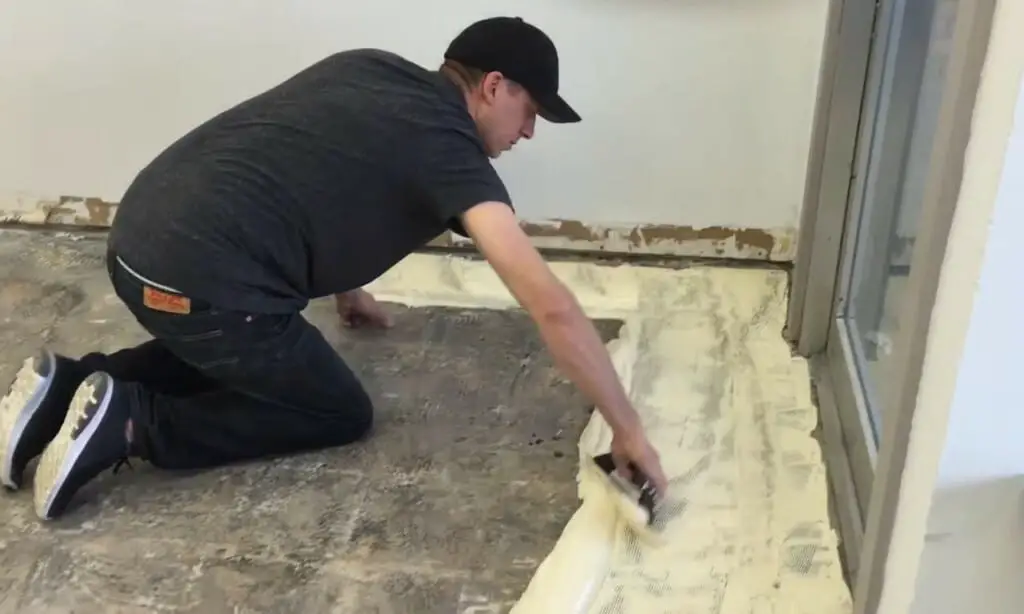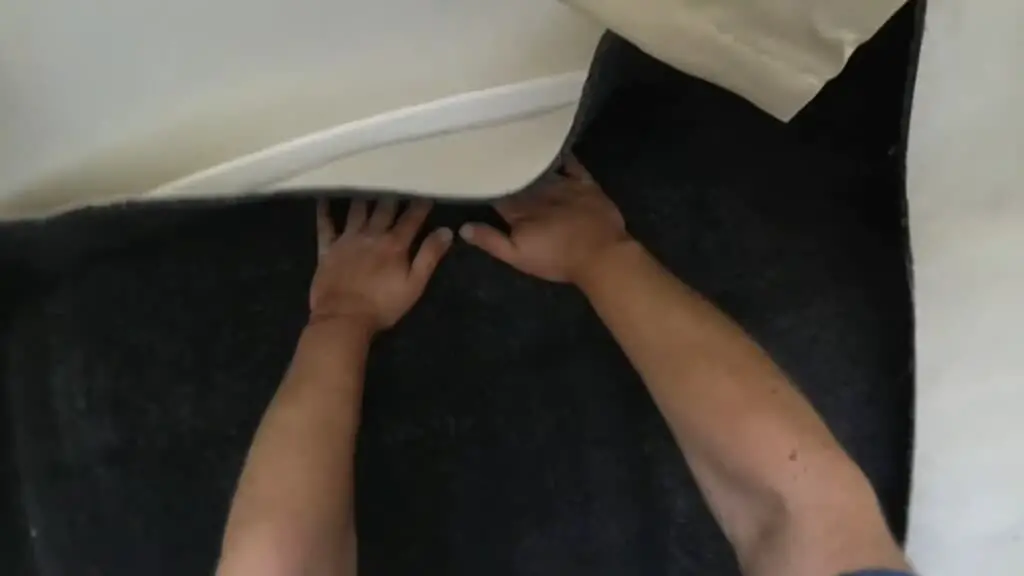Glue carpet to concrete? This is a question that many people have when they are trying to decide what type of flooring they want in their home. There are many options available for this, including glue carpet. It’s important to note that glue carpet will not work on any type of flooring surface, but it does work well on certain surfaces such as cement. In this blog post, we will discuss 5 steps that will help glue your carpets onto your concrete floor!
How to glue carpet to concrete
1. Clear out the area to be glued
Empty the area where you will be working of any items that might get in the way.
Make sure that the concrete is clean and free from debris. This includes dust, dirt, or any other type of particles that could get in between your flooring surfaces. It’s important to note that you should let the cement dry completely before gluing your carpet.
2. Cut out a piece of carpet
Measure and cut the carpet into size and shape to match the area to be glued. You should consider leaving a few extra inches of carpet on all sides. You can always trim the excess material easily later, but if when you glue a carpet to concrete and the fit is too small it will be more difficult – or even impossible – to make the concrete be covered entirely by carpet.
Make sure the carpet is clean and free from debris and roll the carpet with the backside out.
3. Apply the adhesive
If you are using a glue solution that requires mixing, follow any instructions on how much water or other liquid should be added to your glue so that it has the correct consistency.
Applying the adhesive will depend on the glue that you choose to use, but in most cases, you can apply glue by either rolling or brushing it directly onto the concrete surface.
Spread a thin layer of glue solution onto your concrete surface. You should make sure there is no puddle of glue during the application process.
NOTE: There are several types of glue that you can use to glue carpet to concrete. The type of glue you choose will depend on the size of the glued area as well as your project’s special requirements. It is important to note that some glues require a primer before you apply them onto the surface. Make sure to read any instructions included with your glue. If you can’t find professional carpet adhesives, here are a few other glue types to consider:
Types of glue for carpet adhesives
- If you are working on carpet that is small enough to be handled by hand, such as carpet padding or carpet tiles then it makes sense to use a glue gun instead. A hot-glue gun can apply the adhesive where needed and will allow for better control over applying the correct amount of glue onto your project surface.
- If your area is large enough for multiple pieces of carpet glued together then you should choose a high-strength flooring adhesive or construction grade adhesive instead. Heavy duty liquid nails might be the best solution. It is a great multi-purpose adhesive that can handle most flooring projects. Some other choices are construction adhesive or epoxy glue that is used to bond different types of surfaces, including concrete.
- For outdoor projects in which both durability and flexibility matter it would make sense to go with an exterior grade adhesive. These are designed to be used in outdoor projects and will not crack or peel when exposed to moisture for an extended period of time.
- If your carpet is thick enough, you can also use double-stick tape for this project. Double stick tape works well when working with a large surface area and high temperatures will not affect it’s ability to hold heavy materials together. It should be used in dry areas only though because moisture might cause the adhesive to fail over time.

4. Place the carpet onto the concrete
In order to lay the carpet, you should place the carpet so the end of the roll is on the bottom, against one wall. Roll the carpet slowly out toward the opposite wall, keeping it as straight as possible.
Press down again with a roller or board to secure it in place and have no wrinkle or glue bubbles. You need to apply enough pressure so that they stick together firmly but not too much as this could warp them out of shape.
If glue has spread onto the carpet surface you should immediately wipe off any excess with a clean cloth or sponge.
Use scissors or a utility knife to trim off excess carpeting from around corners and doorways. Check to make sure that you glue any edges or corners of your carpet down. You can add glue to the back of these sections if needed.
Place weights on the carpet, especially around the corners or glue seams, to keep them from bubbling.
Repeat steps 3 and 4 for all pieces of carpet in your project area.


5. Allow the adhesive time to dry
Wait at least 24 hours before walking on it for best results (it should be completely dry). After the glue has dried, vacuum up any loose bits of carpet fibers or hair that may have gotten caught in adhesive during installation.
FAQs
How do you seal the edges of the carpet?
For home carpeting, one should just use a regular staple gun or tacker. Staple the carpet down several times around the perimeter of your floor space. This will ensure that it won’t move and you’ll have nice clean lines. Then use an electric floss knife to trim away any excess material left over after taping.
This also works well for commercial carpets, but be sure to ask for help so as not to inadvertently damage other fixtures in the store with your tacker too often! Always test-staple first before using your weapon on real goods!
